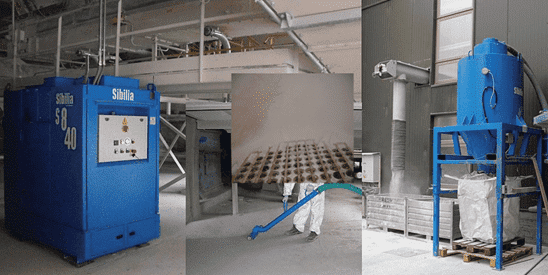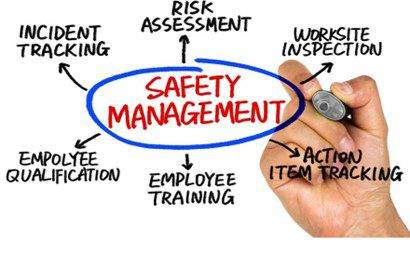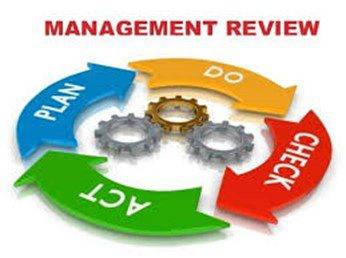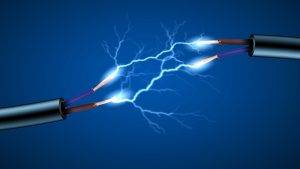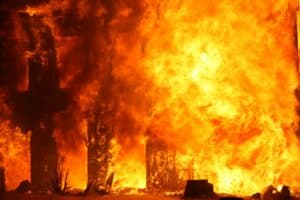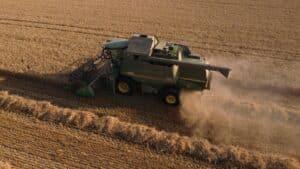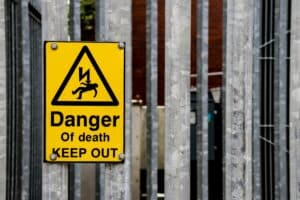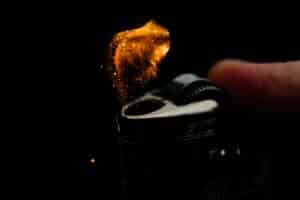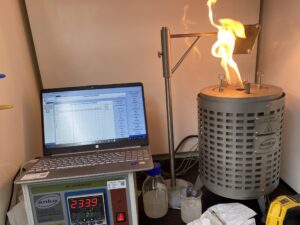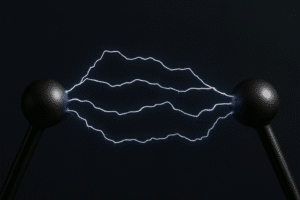Background of Housekeeping
Maintaining good housekeeping in facilities handling or processing combustible dust is crucial. Over the past 30 years, investigations by the Chemical Safety Board and other agencies into serious dust explosions have identified several common causal factors, with inadequate housekeeping programs being a significant one. These programs are essential to keep combustible dust accumulations at safe levels, preventing flash fires or explosions.
Plant management must actively control combustible dust accumulations to protect employees and property from secondary flash fires and explosions. Designing and implementing a rigorous housekeeping program ensures effective management of combustible dust buildup.
A well-designed housekeeping program will also include cleanup frequencies designed to ensure that dust levels do not exceed hazardous accumulation levels and will include timetables for the cleanup of unscheduled spills.
Risks of Secondary Dust Explosions
Secondary dust explosions occur when dust accumulations on elevated surfaces or floors become airborne and ignite due to a primary event. These explosions are particularly dangerous as the initial blast can cause more dust to become suspended and ignite, potentially leading to multiple, powerful secondary explosions.
Regulatory Requirements
-
NFPA Standards: NFPA mandates effective housekeeping programs to manage secondary explosion risks, which often cause more harm than primary explosions.
-
OSHA Housekeeping Standard (29 CFR Part 1910.22): Employers must keep workplaces, passageways, storerooms, and service rooms clean and orderly. Floors should stay clean and dry. This standard allows some interpretation by safety officers.
-
NFPA 652 and 654: These standards require facilities to remove dust from floors, structural members, and other surfaces during operations. Each facility must develop and implement a written housekeeping program that specifies cleaning frequency and methods. NFPA 654 offers detailed guidelines for establishing a thorough housekeeping program.
Methods to Determine Dust Accumulation Limits
Use four primary methods to assess the risk of flash fires or explosions caused by dust accumulation. These methods help structure housekeeping programs to prevent hazardous dust levels and protect the facility from fire and explosion risks. The methods are:
The Layer Depth Criterion Method
This method sets a maximum allowable dust layer thickness based on the dust’s bulk density. It calculates the layer depth criterion (LD) by using a reference bulk density value and adjusting it for the specific dust. This criterion helps identify when dust accumulation becomes hazardous. To calculate LD, multiply the benchmark accumulation level of 1/32 inch (from NFPA 654, section 6.1.3) by 75 lb/ft³ (the reference bulk density), then divide the result by the bulk density (ρ) of the dust being evaluated. This gives the new maximum allowable dust thickness or layer depth criterion.
Equation 1: LD (in.) = [(1/32) * 75]/ρdust
Mass Method A
This approach checks for flash fire or explosion hazards by measuring the total dust mass accumulated outside the equipment. It uses specific equations to set threshold dust masses that indicate hazard levels. Because it doesn’t require detailed physical property data, this method is simpler, conservative, and practical. When the total dust outside the equipment exceeds the values from Equations 2 and 3, the area qualifies as a dust flash fire or explosion hazard. The threshold dust mass that defines a building or room as a dust explosion hazard area, M_basic-exp, is calculated using the following equation:
Equation 2: M basic-exp = 0.004*Afloor*H
where:
Mbasic-exp =threshold dust mass (kg) based on building damage criterion
Afloor=lesser of enclosure floor area (m2) or 2000 m2
H=lesser of enclosure ceiling height (m) or 12 m
The threshold dust mass establishing a building or room as a dust flash-fire hazard area, Mbasic-fire, is determined by the following equation:
Equation 3: Mbasic-fire = 0.02*Afloor
Where:
M basic fire is threshold mass (kg) based on personnel fire exposure criteria.
A floor is lesser of enclosure floor area (m2) or 2000 m2
These equations do not require measurement of any physical or combustibility properties for an application and tend to lead to a more conservative outcome.
Mass Method B
A more complex method involves separate equations to calculate the threshold dust mass establishing the hazard. It requires inputs on various parameters such as building strength, worst-case dust concentrations, dust entrainment factors, and the probability of flame impingement. This method is detailed in NFPA 654 and provides a thorough hazard assessment but can be challenging due to the need for precise data. NFPA 654 (section 6.1.5.1) provides more information with regard to this method.
Risk Evaluation Method
This method involves a documented risk evaluation, accepted by the authority having jurisdiction (AHJ), to determine the presence of a dust explosion or flash fire hazard. It focuses on material properties and facility design features. Specialist expertise and specific test data are usually required, making it suitable for scenarios with unique dust characteristics, such as low bulk density or low ignition sensitivity.
Typically, the use of this method will require specialist expertise with extensive knowledge of combustible dust and the associated fire and explosion hazards. In addition, appropriate test data will be required with regard to the particular dust being generated. The method can offer significant advantages over the other three methods described here, for example, where:
- the bulk density of dust is low.
- hygroscopic dust is being handled/generated.
- the ignition sensitivity properties of dust are low.
- the nature of the solid particulate makes the formation of fine dust clouds difficult.
Summary Methods to Determine Dust Accumulation Limits Estimation
An effective housekeeping program should keep dust accumulation levels below those that could cause flash fires or explosions if the dust becomes airborne. Developing and implementing such a plan, including regular inspections, ensures these goals are met.
Use the Layer Depth Criterion or Mass Method A to set threshold limits for dust accumulation and manage flash fire and explosion risks. If these methods are impractical or difficult to apply, management should consider a risk-based evaluation.
Implementation of an effective housekeeping program can significantly reduce the risk of having a major industrial dust flash fire or explosion incident.
Relationship Between Housekeeping and Hazardous Area Classification
Housekeeping Plan Should Include:
-
Routine Cleaning: Maintain regular cleaning to prevent dust buildup on walls, floors, equipment, ducts, hoods, ledges, beams, and hidden areas (e.g., above ceilings, inside electrical enclosures).
-
Inspection & Frequency: Schedule inspections to monitor dust levels and adjust cleaning frequency to keep dust below limits.
-
Spill Cleanup: Set specific cleanup times for spills or short-term dust accumulation (see Tables 1 and 2).
-
Electrical Classification:
-
Refer to NFPA 70 (NEC) Article 500.4(B) and NFPA 499 for hazardous area classification.
-
NFPA 499 defines:
-
Division 1: Dust airborne under normal conditions or due to equipment failure; dust layers >1/8 inch.
-
Division 2: Dust usually settled but may become airborne during malfunctions.
-
-
-
Housekeeping’s Role: Good housekeeping determines if areas are Division 1, Division 2, or unclassified based on dust thickness (see Table 1).
Table 1: Unscheduled Housekeeping
| Accumulation on the Worst Single Square Meter of Surface | Longest Time to Complete Unscheduled Local Cleaning of Floor-Accessible Areas | Longest Time to Complete Unscheduled Local Cleaning of Areas |
|---|---|---|
| >1 to 2 times threshold dust Mass/accumulation | 8 hours | 24 hours |
| >2 to 4 times threshold dust Mass/accumulation | 4 hours | 12 hours |
| >4 times threshold dust mass /accumulation | 1 hour | 3 hours |
Table 2: Cleaning frequencies based on the depth of the dust layer
| Depth of Dust Accumulation (in.) | Frequency | Housekeeping Requirements | Area Electrical Classification |
|---|---|---|---|
| < 1/32 | Continuous / frequent | Clean up as necessary to maintain an average accumulation below 1/64 in. | Unclassified; however, electrical enclosures should be dust-tight |
| 1/32 to 1/8 | Infrequent | Clean up during same shift | Unclassified; however, electrical enclosures should be dust-tight |
| 1/32 to 1/8 | Continuous / frequent | Clean as necessary to maintain an average accumulation below 1/16 in. | Class II, Division 2 |
| > 1/8 | Infrequent | Immediately shut down and clean | Class II, Division 2 |
Housekeeping Procedure
Visual Baseline and Cleaning Frequency
Establish a visual baseline in the process area to observe and measure dust over specific periods (such as a shift or a day). This helps determine the proper cleaning frequency to keep dust accumulation below the 1/32 inch benchmark, as shown in Tables 1 and 2.
Design dust-handling systems—including exhaust ducts, dust collectors, vessels, and processing equipment—to prevent fugitive dust from leaking into the work area.
Regularly clean horizontal surfaces, floors, decks, walls, bulkheads, and equipment components such as ducts, pipes, hoods, ledges, beams, stair rails, and concealed surfaces above ceilings. Cleaning should be frequent enough to prevent dust accumulations of 1/32 inch or greater.
Housekeeping methods should avoid generating dust clouds that can resettle at higher elevations.
Vacuum Cleaning Equipment and Practices
The use of vacuum cleaners—either mobile units or central vacuum systems—is the preferred housekeeping method.
-
Central systems offer greater storage capacity and connection points throughout the facility, reducing the need to move equipment in tight spaces.
-
Mobile vacuum cleaners are acceptable, provided they meet applicable safety requirements.
Vacuum cleaners used in Class II atmospheres must:
-
Be listed for use in these areas.
-
Use static-dissipative or conductive hoses and tools that are properly grounded.
Additional requirements for portable vacuum systems include:
-
Performing a dust hazard analysis (DHA) before use to minimize deflagration risks.
-
Ensuring hoses and tools are suited for dust hazard environments and meet conductivity and grounding standards.
-
Avoiding use on processes generating hot embers or sparks.
Vacuum systems in unclassified areas should:
-
Include static-dissipative or conductive hoses.
-
Ensure all conductive components are bonded and grounded.
-
Position fans and motors on the clean side of filtration systems unless motors are Class II, Division 1 rated.
-
Avoid paper filter elements when picking up liquids or wet materials.
Vacuum System Safety Considerations
When using a vacuum system, facilities should:
-
Never vacuum ignition sources or glowing embers.
-
Follow the manufacturer’s instructions.
-
Use only approved accessories.
-
Empty the vacuum before and after each use.
-
Inspect filter pleats for excessive material buildup.
-
Check power cables for wear and replace them if needed.
Central vacuum systems should meet NFPA 652, Section 8.3.3 requirements:
-
Maintain minimum conveying velocities with one or multiple operators.
-
Use hose lengths and diameters appropriate for the application.
-
When collecting ignition-sensitive materials, ensure all tools are grounded, static dissipative or metallic, and constructed for use in hazardous areas.
Manual Cleaning Methods
Scoops, brooms, and brushes may be used, but care must be taken to avoid creating dust clouds.
-
Use soft brooms or natural fiber brushes to minimize dust dispersion.
-
Avoid vigorous sweeping and blowdowns with compressed air or steam.
Use of Compressed Air
Facilities generally prohibit using compressed air for cleaning. Exceptions apply only when cleaning inaccessible areas with no alternatives, following conditions in NFPA 652 Section 8.4.2.6.2 and NFPA 654 Section 8.2.2.4.
Before using compressed air:
-
Use vacuuming, sweeping, or water wash-down methods on accessible surfaces first.
-
Ensure post-cleaning dust accumulation does not exceed housekeeping thresholds.
Compressed air safety requirements:
-
Hoses must be equipped with pressure relief nozzles limited to 30 psi (207 kPa), per OSHA 29 CFR 1910.242(b).
-
Electrical equipment exposed to airborne dust must be rated for Class II, Division 2 (e.g., NEMA 12 or equivalent).
-
Remove or shut down ignition sources and hot surfaces before cleaning.
-
After blowdown, clean residual dust before reintroducing potential ignition sources.
The Use of Personal Protective Equipment
Flame-Resistant Garments
-
Provide flame-resistant clothing to all personnel exposed to combustible dust during cleaning or handling.
-
These garments minimize injury risks from dust ignition by reducing burn hazards.
-
Supplying proper flame-resistant clothing is essential for worker safety in dust-prone environments.
Selection Criteria for Flame-Resistant Garments
-
Consider thermal protective properties across a range of exposures.
-
Evaluate fabric quality, garment construction, and durability.
-
Ensure proper fit and design for safety and comfort.
-
Assess garment wear life and follow recommended laundering instructions.
-
Take wearer comfort and environmental conditions into account.
Care, Use, and Storage
-
Provide personnel with manufacturer instructions on garment care, use, maintenance, and limitations.
-
Educate workers about proper use of undergarments and overgarments.
-
Store garments inside, away from direct sunlight, in a dry, ventilated area, preferably on hangers.
-
Keep cleaned garments separate from uncleaned ones.
-
Follow manufacturer advice regarding storage conditions to prevent damage.
Additional Protective Equipment
-
Personnel handling dusty or granular materials should wear eye protection.
-
Where dust has more than nuisance toxicity, use tight-fitting or positive-pressure masks to ensure respiratory protection.
Employee Training
- Ensure that all operators, mechanics, functional, and technical personnel receive awareness training on the explosion risk from combustible dust hazards, including housekeeping procedures. For a specific operational location, train personnel on preventive and protective measures to control combustible dust hazards. New employees, groups of employees, or those returning after more than six months must undergo basic training specific to their location, focusing on preventive measures and housekeeping protocols.
- Train employees on emergency procedures for incidents involving combustible dust within their location. Emphasize the critical safety components and necessary employee actions to maintain them properly. Ensure employees understand the proper use of fire extinguishers and receive training in their application. Highlight the hazards associated with smoldering piles of powder and stress that gas-driven fire extinguishers should not be used as they can create dust/air suspensions, presenting a deflagration hazard.
- Ensure employees are trained on housekeeping procedures and the use of appropriate housekeeping equipment. Provide refresher training once a year, focusing on changes that have occurred during the year and reviewing emergency procedures rather than repeating the onboarding training.
Management Systems
- Ensure that appropriate Management Systems are in place and used effectively in combustible particulate processing areas to minimize risk. Changes to operations involving combustible dust, including process, product, or systems changes, should meet the site Management of Change program requirements. Management of Change associated with combustible dust is critical.
- Any change to material composition, raw material manufacturing method, vendor, process design, or equipment handling combustible dust should trigger a Management of Change process. This process ensures the team assesses and mitigates all potential risks properly.
- Because dust handling equipment poses high risks, workers must obtain an approved Permit to Work before performing any maintenance, sanitation, or modifications. They should follow all permit procedures, including reviewing work area rules to reduce combustible dust risks, inspecting the area after completing tasks, and signing off the permit before returning the system to production.
Management Reviews
- Renew or review this housekeeping program at least every three years to maintain its effectiveness. However, update and verify the program whenever specific circumstances arise.
- Update and verify the program after any explosible dust cloud incident, such as a fire, explosion, or near-miss. Also, make updates when the Management of Change Procedure identifies a need or after significant changes to the facility or its operations.
- Regular review and timely updates of the program are crucial for maintaining safety and addressing any new risks or changes in the operational environment





